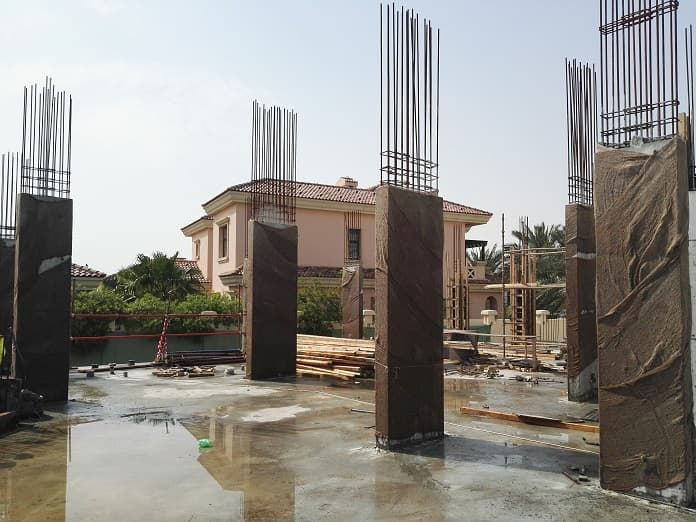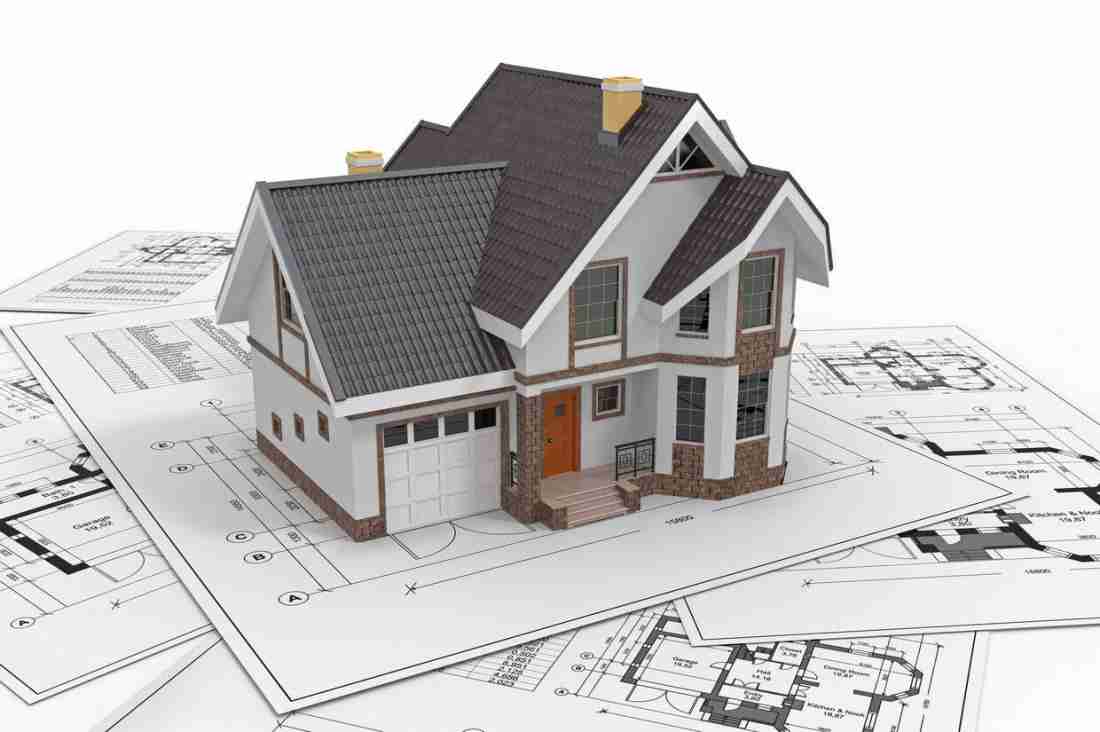The pillar, also known as the pillar, is one of the indispensable structures in the structure of a building or a construction work. Normally, when building, the columns will be firmly built along the vertical structure, with a round or square cylinder. Pillars are designed to resist the top of the house pressing down, bearing the full force of the house. The size of the column of a residential house will vary depending on the house.
The role of residential columns with residential buildings
A complete house is composed of many different elements such as foundations, frames, columns, ceiling beams, floors, roofs, ……. Any structural element is also extremely important, indispensable. Each of those parts, plays a separate role to ensure the completeness and certainty of the house. In those parts, the first mention of the importance is none other than the house column.

If humans can stand, fly, move, create their own shape, the skeleton is the most important part. And so is the house, the pillar is the skeleton of the house. The column system with different designs depending on the location has been designed before.
Depending on the living space according to your style, the houses will have the appropriate shape. If you are a person who likes a gentle, soft style, the round pillar with a floating pattern will be the perfect choice. On the contrary, if you are a person with a strong personality, like to be healthy, a square pillar with a clear line will create your own style.

However, you need to understand that each house will have a different number of columns depending on the space used and the size of the house that the owner wants. That means that the column size of residential houses will also be completely different. Based on the height of each floor, the location of the house in the countryside or the city, the requirements of the homeowner’s design are classic or modern, all column sizes are different.
Dimensions of the column of a residential house
Dimensions of columns made of bricks
When designed from brick, stone, the column has a bearing structure, the size and cross-section are small compared to the height of the column, so it is often weak in bending and has a large slenderness. Made of brick and stone, this type of column is used for low-rise residential buildings or for decoration in townhouses, often used to support beams and floors. Brick and stone columns are placed through a reinforced concrete slab or a layer of cement mortar of grade > 50, thickness 30mm and spread evenly on the top of the column or wooden cushion.
These columns usually have rectangular, square, circular or octagonal area, so the size of brick and stone columns of each type is based on the cross section. The advice for you is to use a column with a cross section of 220×220 with a low height of the column, bearing a small load. Use column cross section 335 x 335; 450×450; 565×565; 680×680 for tall columns, bearing large loads.
With low bearing capacity, especially for flexural columns, reinforcement or reinforced concrete cores should be placed in brick and stone columns. Need to be placed horizontally in horizontal or vertical mortar joints.
Columns made from bamboo and wood
This bamboo and wood material is often used to build buildings according to classical architecture, or temples, or level 4 houses, temporary houses. These types of bamboo and wooden poles are mainly made from ramie bamboo and common wood. Based on the different uses of the homeowner, the columns made of bamboo and wood will have different sizes.
If the column is made of old bamboo, it is recommended to choose a diameter larger than 100mm, a length greater than 2200mm. If it is a wooden pole, it is buried 0.5-0.6m underground. For normal constructions, bamboo and wooden columns are placed on bricks, stones or concrete. Wooden poles are round with a diameter of more than 100mm or square with dimensions of 140x140mm, 160x160mm, etc.
Because of the typical nature of bamboo and wood, to avoid unnecessary incidents caused by rainstorms, wooden poles need to be firmly fixed to the foundation of the house. This will make the house stronger
Dimensions of reinforced concrete house columns
In addition to the above two materials, the columns of civil houses are also made of reinforced concrete. This is probably the most common method. Columns made of reinforced concrete should be designed with a ratio of height to side less than that of the column, not more than 40, to ensure that the column is not too thin. At the same time, the small side of the column is usually larger than 200mm. Column size is designed unchanged from bottom to top
As for the reinforcement in the column, it will be placed symmetrically with a diameter of 12-22mm. The distance between the belts is usually less than 15 times the diameter of the largest and smaller longitudinal reinforcement of 500mm column. There is a gap between. For columns with rectangular cross section, the reinforcement of the rectangular pile is small, with a diameter of more than 250mm, the diameter of longitudinal reinforcement is larger than 16mm.
Regarding the reinforcement protection layer, this part should be larger than 25mm for longitudinal reinforcement and more than 15mm for belt reinforcement. The thickness of the reinforcement protection layer is greater than 25mm for longitudinal reinforcement and more than 15mm for belt reinforcement.
The formula to calculate the size of concrete columns for civil housing works
Calculating residential columns has never been easy. This work requires people who not only have a high level of expertise but also a lot of experience to get accurate final results. Here is the formula to calculate the size of concrete columns that we send to you.
Formula for calculating column cross-sectional area:

Inside:
k: factor including bending moment
k= 1.1 for indoor columns
k= 1.3 for boundary column
k= 1.5 for corner column
Rn (Rb): Compressive strength of concrete
N: Total load acting on the column under consideration. N is calculated according to the following formula: N=m.q.F
- m: is the number of floors on the column under consideration
- q: is the equivalent load per square meter of floor surface, including permanent and temporary loads on the floor, weight of beams, column walls. q taken from experience
- q=10-14KN/M2 for houses with a floor thickness of 10-14 cm with few walls, the size of columns and beams is small
- q=15-18KN/M2 for houses with a floor thickness of 15-20 cm with few walls, average size of columns and beams
- q>=20 KN/M2 for houses with floor thickness >25 cm with few walls, the size of columns and beams is large
Formula to check the thinness:

Inside:
Hc is the actual height of the column
bc is the size of the small side of the column
Column beam test formula

Inside:
id/ic in the range 0.2 – 5 ensures the connection of beams and columns is underground
reasonable then id/ic = (2-3)
Factors affecting the size of concrete columns
In order to have a solid house column system, ensuring both size and quality, it is necessary to have the influence of many different factors:
Only carry out the construction of concrete columns when it is certain that the reinforced concrete part of the foundation has solidified
Clean the concrete between the reinforcement, before pouring concrete
Use diluted cement water to bond the old and new concrete more firmly
Attention should be paid to knocking on the outside of the formwork wall and poking at the corners so that the concrete is not pitted, with concrete columns with lots of steel.
Avoid bending or twisting steel for low-steel columns
Column from 2m – use inclined chute to pour concrete; columns over 4m – open a small door on the column body at a height of 2m to complete the high concrete shelter door; poles from 5m-10m – use elephant hoses


